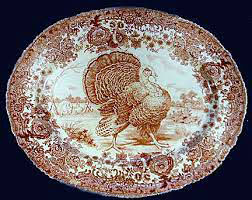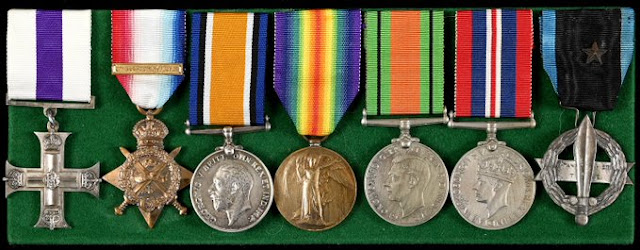 QUESTION: I was browsing in an antique shop recently and came across a box with some old Victorian Christmas cards. Among the usual ones showing Santa Claus and children sledding were some really bizarre ones depicting mice and rats and insects doing some strange things. What prompted the Victorians to create such horrific cards for a festive holiday.
QUESTION: I was browsing in an antique shop recently and came across a box with some old Victorian Christmas cards. Among the usual ones showing Santa Claus and children sledding were some really bizarre ones depicting mice and rats and insects doing some strange things. What prompted the Victorians to create such horrific cards for a festive holiday.
ANSWER: The Victorians as a whole were not the happy people sitting by a cozy fire or playing in the snow that most Victorian B&Bs and historic shopping districts portray them to be. They had a dark side, too. They were a curious lot and had a wacky sense of humor. So it stands to reason that this eventually made it onto their holiday greeting cards, like these insects performing scenes from “Macbeth.” They thought nothing unusual about sending their loved ones bizarre and creepy images with the words “May yours be a joyful Christmas.”
During that time, Christmas was hardly celebrated, at least, not in a way people would recognize it today. Many businesses didn’t consider it to be a holiday.
 One of the most significant seasonal traditions to emerge from the Victorian era is the Christmas card. The first Christmas cards, modeled after Victorian visiting cards, didn’t fold. Instead, designers created small rectangles of pasteboard, about the size of an index card, decorated on one side with a lithographed or etched drawing, a greeting, and blank space for the names of both the sender and the addressee. By the 1870s, manufacturers had started producing larger cards and folded cards. Some opened out like cupboard doors; others fell into accordion folds.
One of the most significant seasonal traditions to emerge from the Victorian era is the Christmas card. The first Christmas cards, modeled after Victorian visiting cards, didn’t fold. Instead, designers created small rectangles of pasteboard, about the size of an index card, decorated on one side with a lithographed or etched drawing, a greeting, and blank space for the names of both the sender and the addressee. By the 1870s, manufacturers had started producing larger cards and folded cards. Some opened out like cupboard doors; others fell into accordion folds.
Early British cards rarely showed winter or religious themes, instead favoring flowers, fairies, and other fanciful designs that reminded the recipient of the approach of spring.
The Victorians loved natural things and used other images on their cards that focused less on Christmas, such as flowers, shrubs, and trees. Animals, often portrayed as humans, provided another popular subject for the Victorian Christmas card. Images of children, playing with angelic expressions, also adorned many cards.
 Since they lived during the Industrial Age, Victorians loved Christmas cards featuring new inventions, such as the motorcar or bicycle. And though Victorian morals frowned upon pubic sexual expression, some cards had portraits of beautiful girls dressed in flimsy robes or partially nude. Some cards were just downright bizarre with dark themes.
Since they lived during the Industrial Age, Victorians loved Christmas cards featuring new inventions, such as the motorcar or bicycle. And though Victorian morals frowned upon pubic sexual expression, some cards had portraits of beautiful girls dressed in flimsy robes or partially nude. Some cards were just downright bizarre with dark themes.
This trend led to Victorian Christmas cards that appear more unsettling to the modern eye. People sent and received ones that showed, among other odd pictures, the aftermath of one frog murdering another, a plate of dead birds, and humans emerging from the stomachs of creepy snowmen. Also featured were bizarre images of animals, fruits, and vegetables, such as sinister walking potatoes and Christmas dinner ingredients dancing to the music of a violin-playing rabbit.
 One of the strangest images found on late 19th-century Christmas cards was a dead robin lying in the snow. Perhaps the Victorian’s obsession with death and fondness for images that evoked pity can explain this unique custom.
One of the strangest images found on late 19th-century Christmas cards was a dead robin lying in the snow. Perhaps the Victorian’s obsession with death and fondness for images that evoked pity can explain this unique custom.
The dark nature of this sort of image also reflects differences between Victorian values and those of today. The inclusion of images of dead robins may be unsettling today, but for people of the 19th century, it was meant to signify a good luck ritual that was sometimes performed: To celebrate St. Stephen’s Day on the day after Christmas, people would kill a small bird, either a robin or a wren. Sending those images of the deceased beasts was actually intended to bestow good fortune.
 Some newspapers ran reviews of each season’s designs, in the way that films might be reviewed today, which increased the urgency for designers to create ever more unusual imagery in order to be competitive.
Some newspapers ran reviews of each season’s designs, in the way that films might be reviewed today, which increased the urgency for designers to create ever more unusual imagery in order to be competitive.
To read more articles on antiques, please visit the Antiques Articles section of my Web site. And to stay up to the minute on antiques and collectibles, please join the over 30,000 readers by following my free online magazine, #TheAntiquesAlmanac. Learn more about "Return to Toyland" in the 2024 Holiday Edition, online now. And to read daily posts about unique objects from the past and their histories, like the #Antiques and More Collection on Facebook.














































